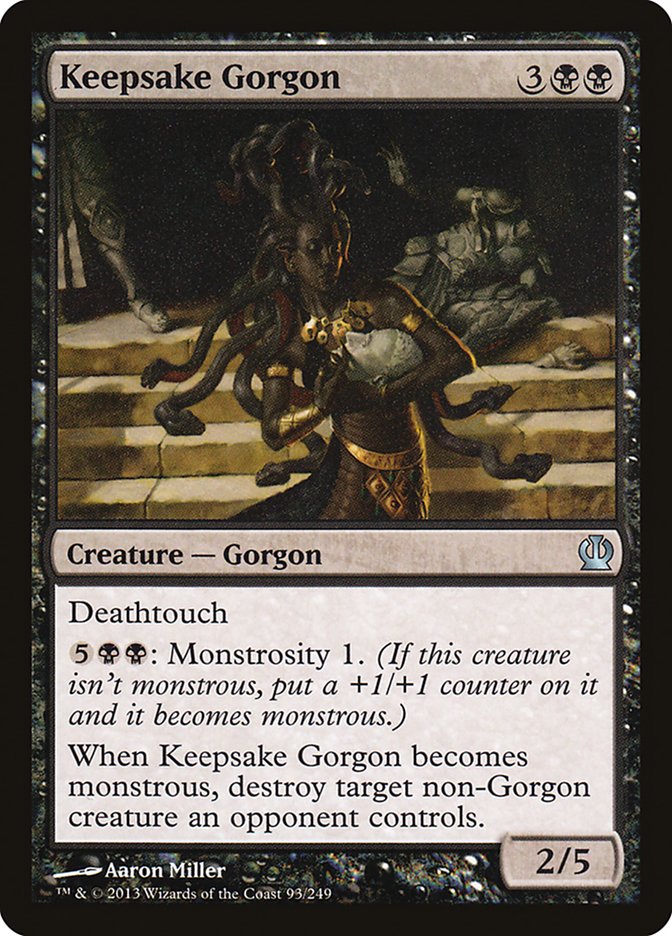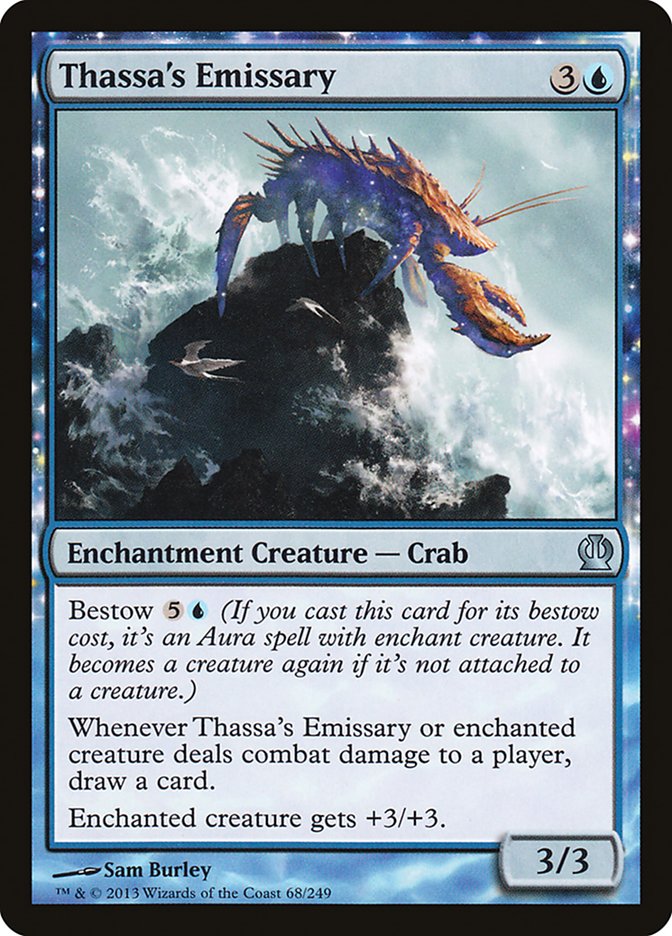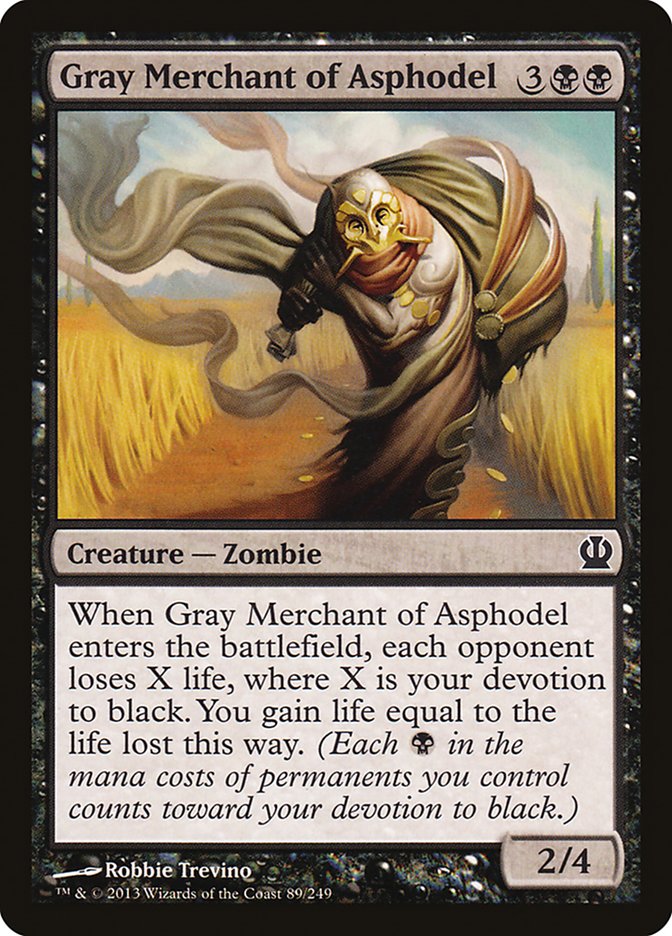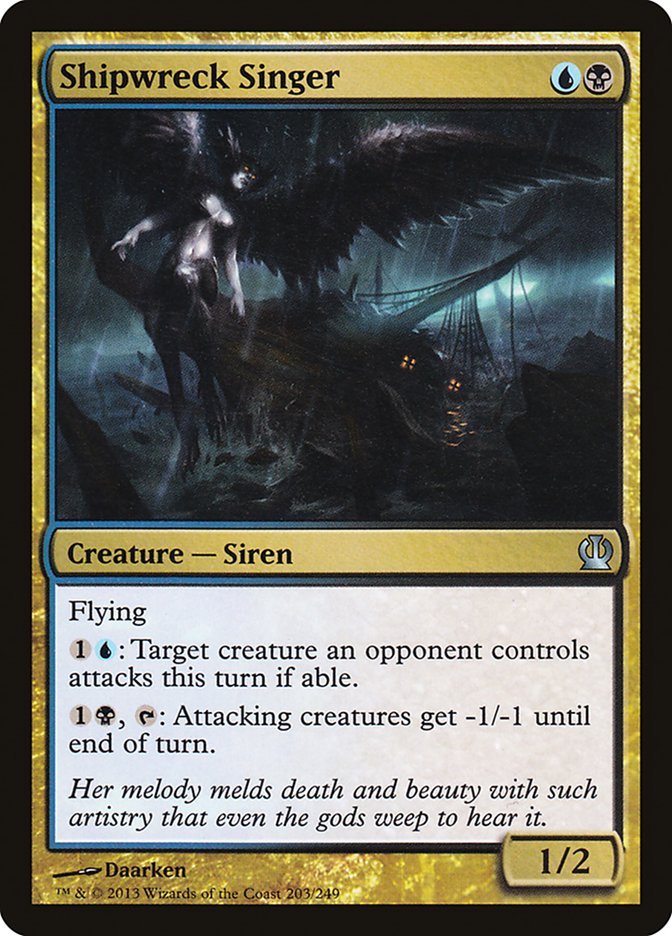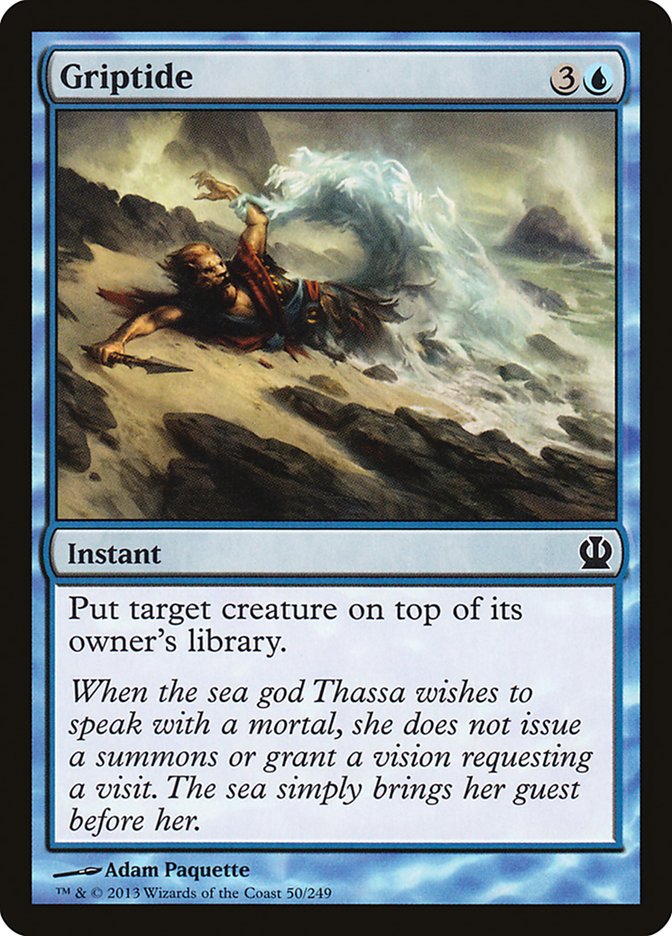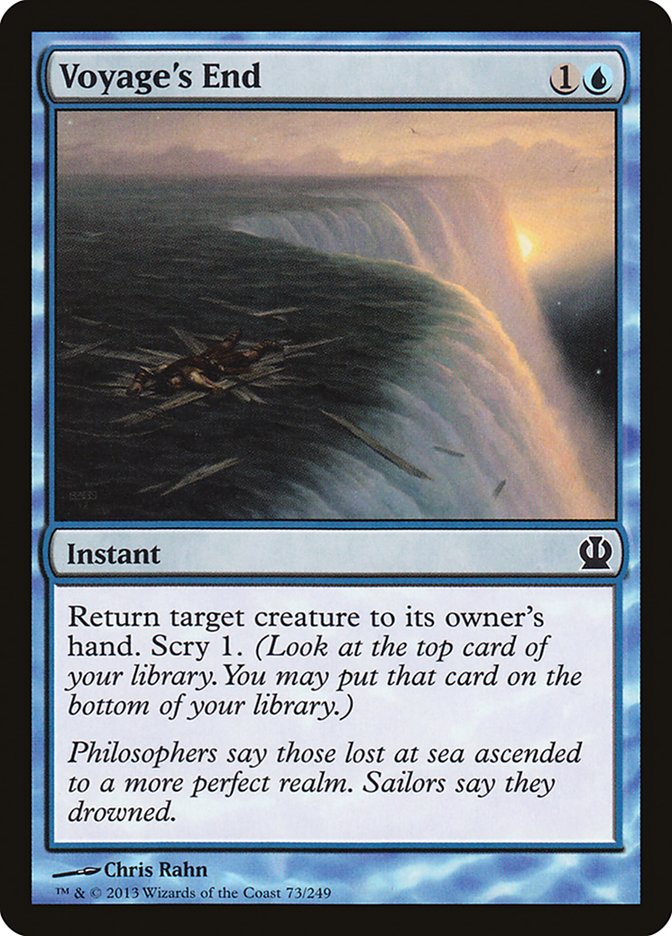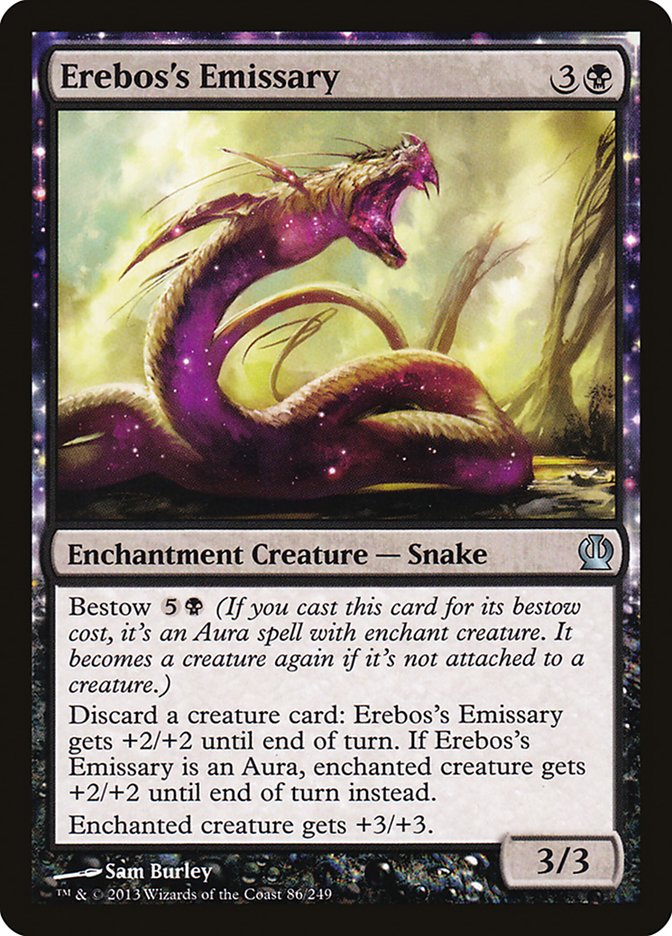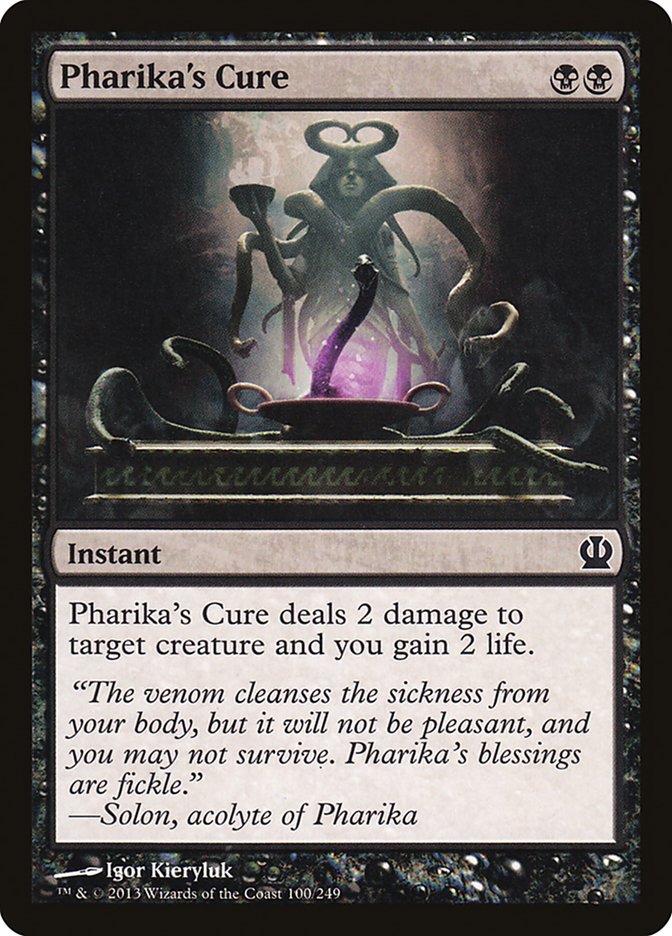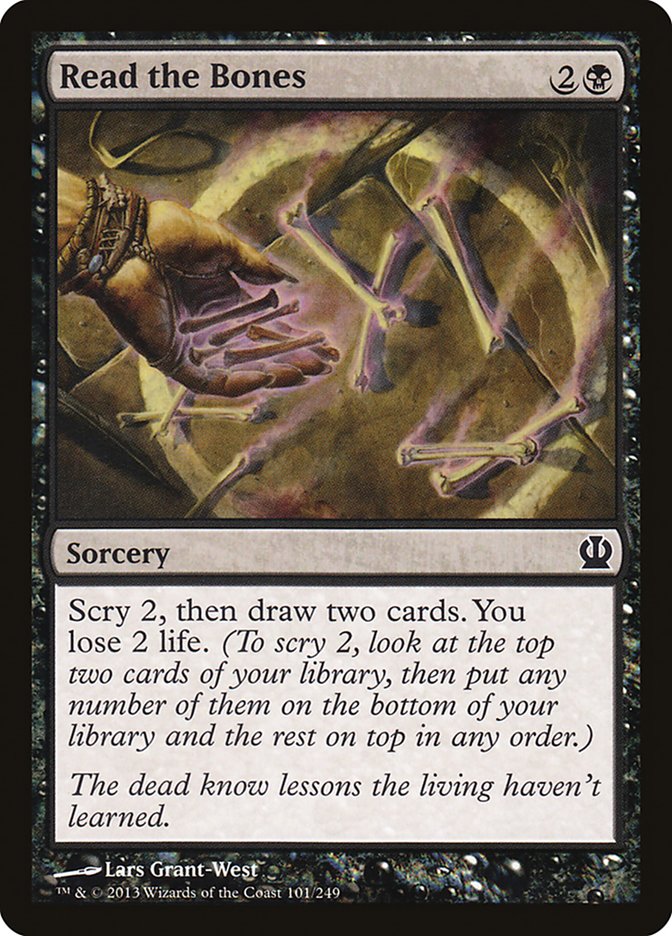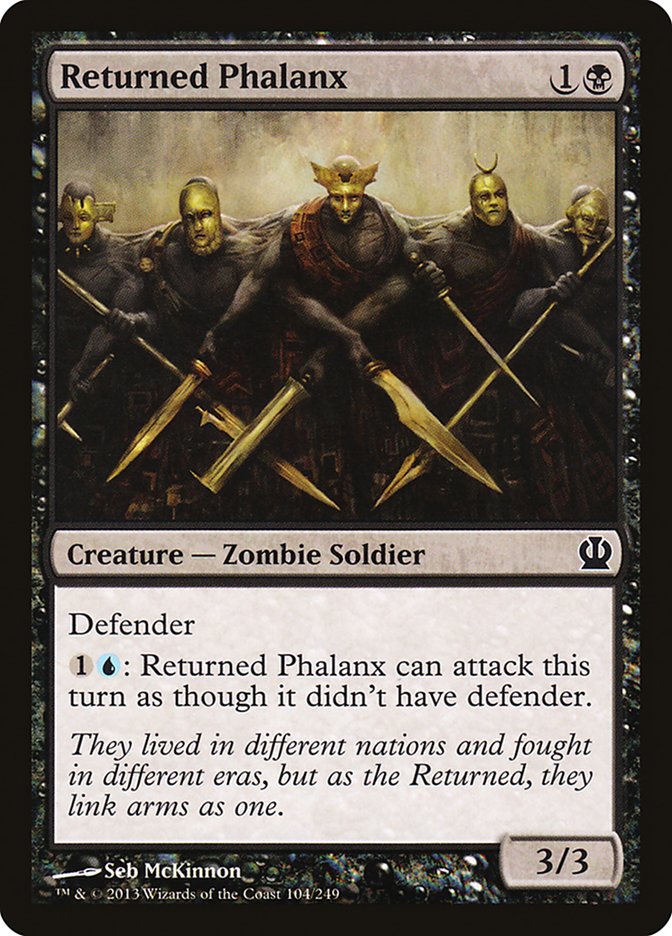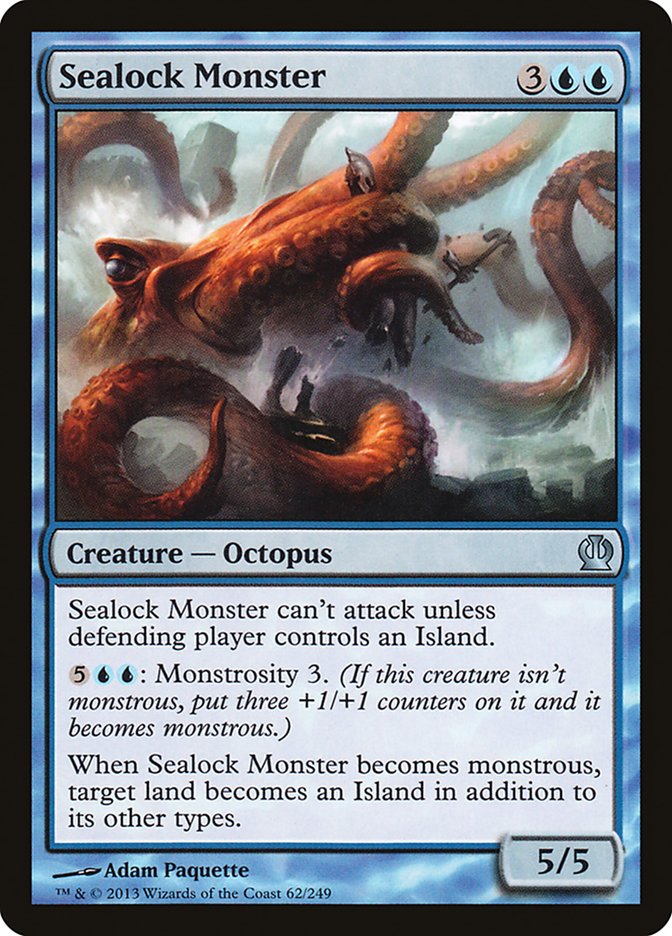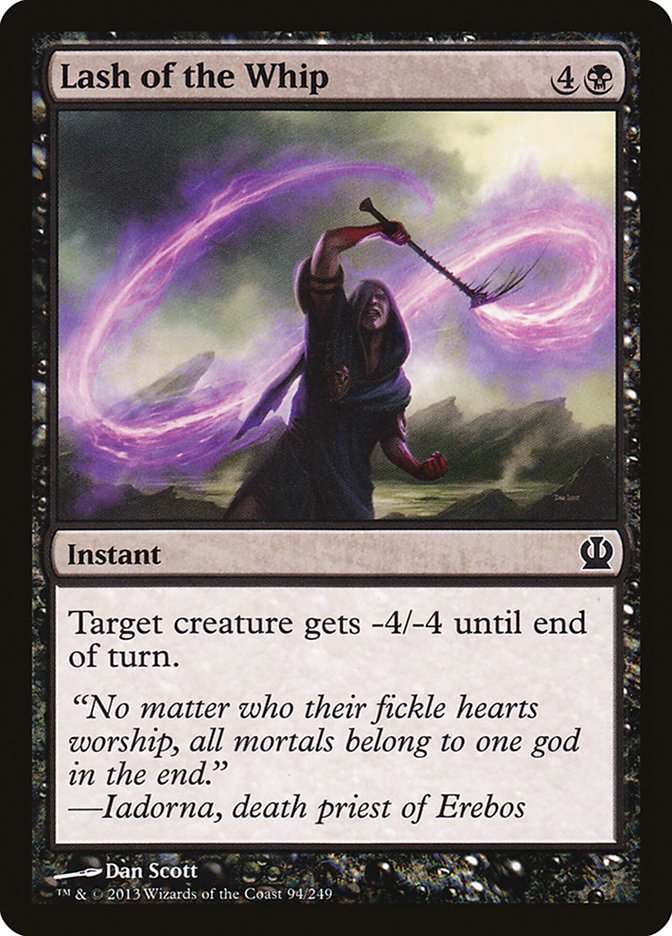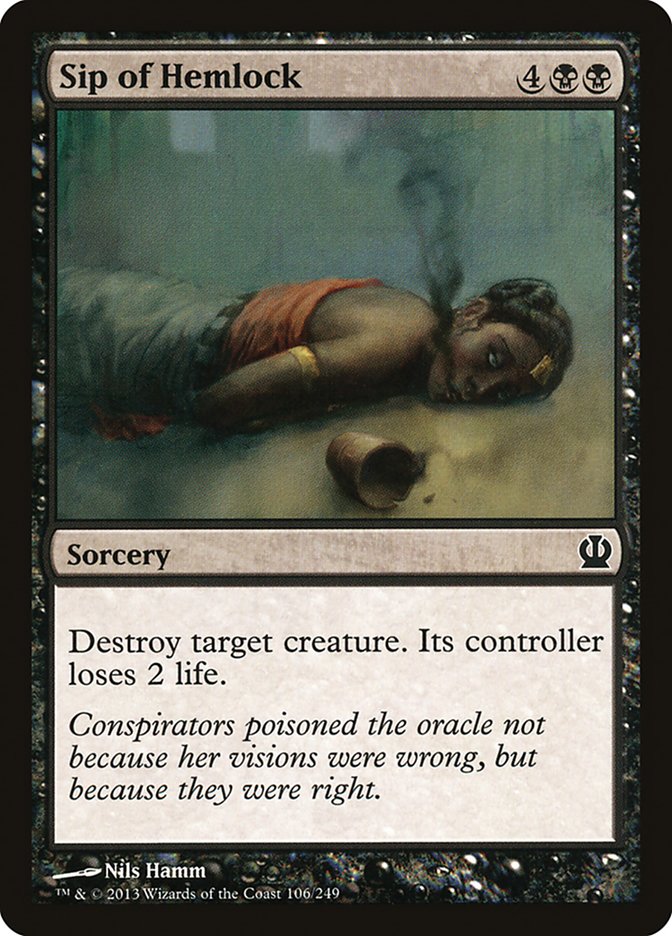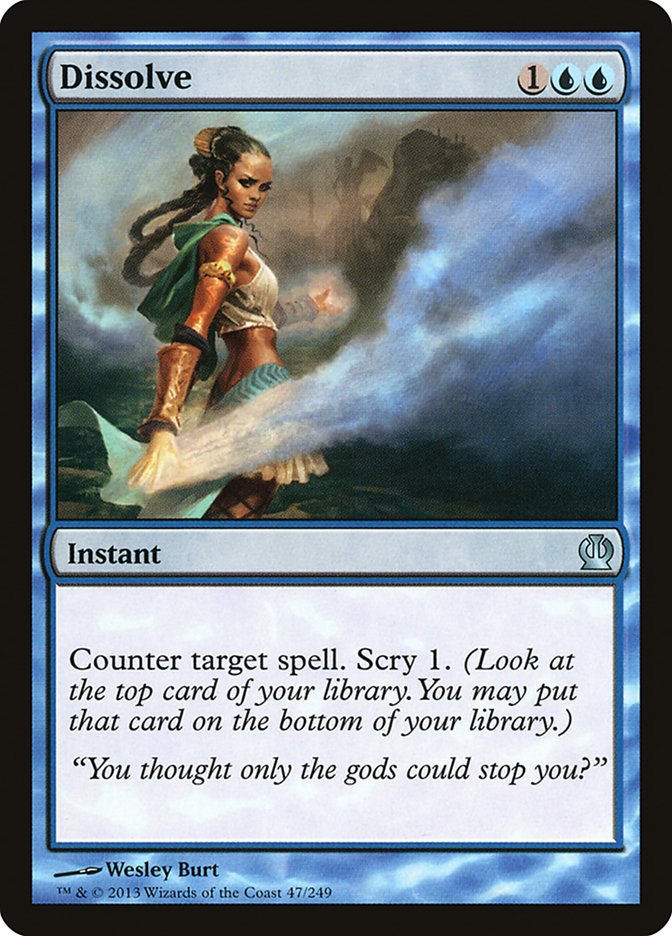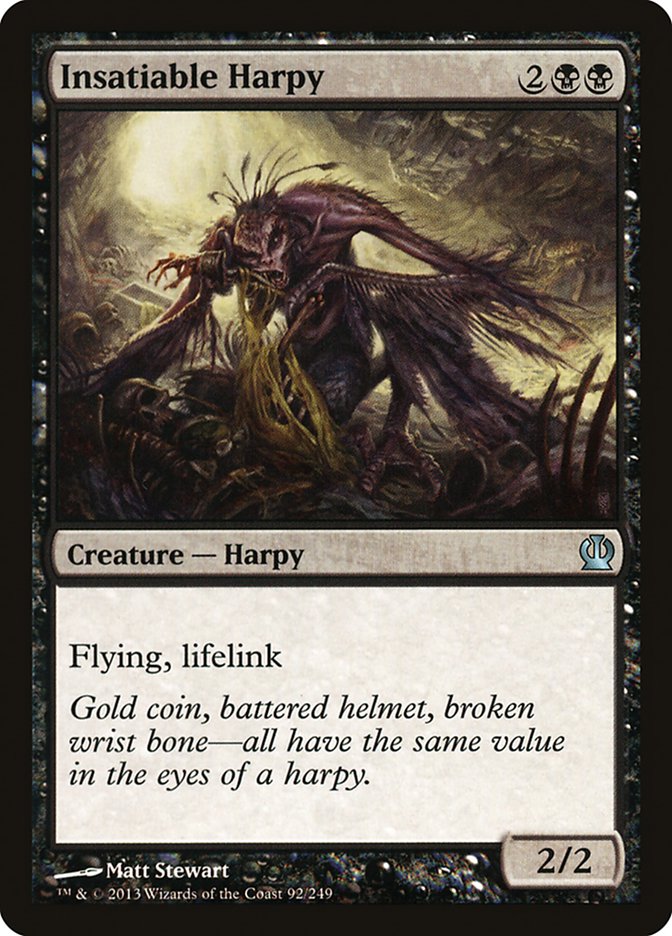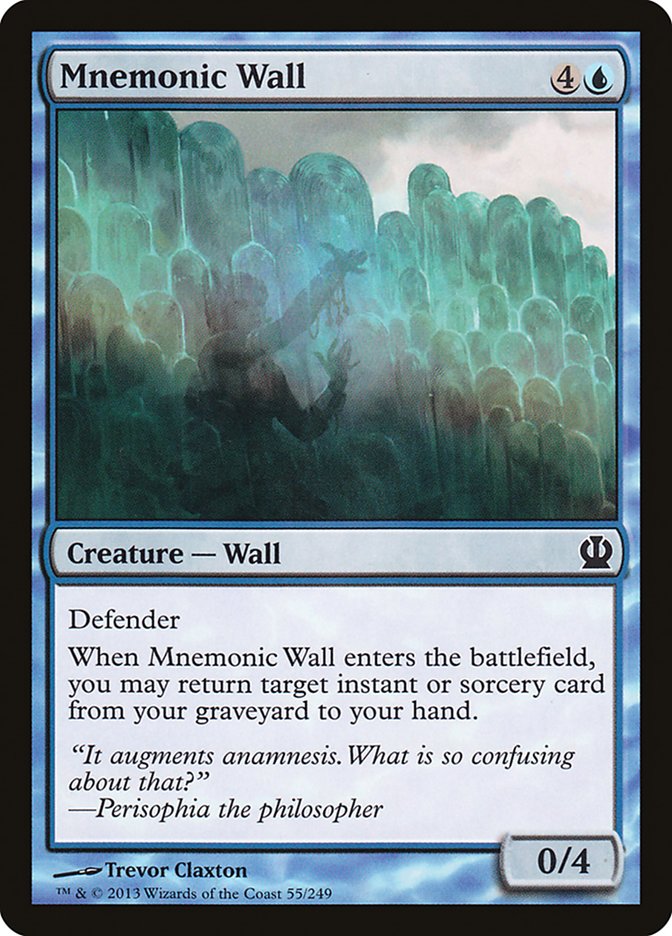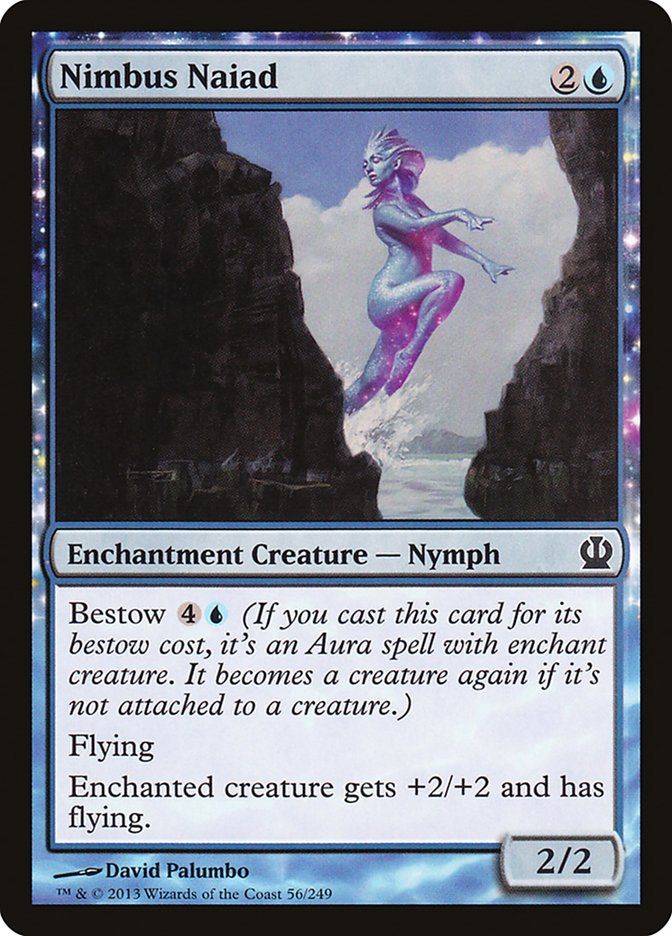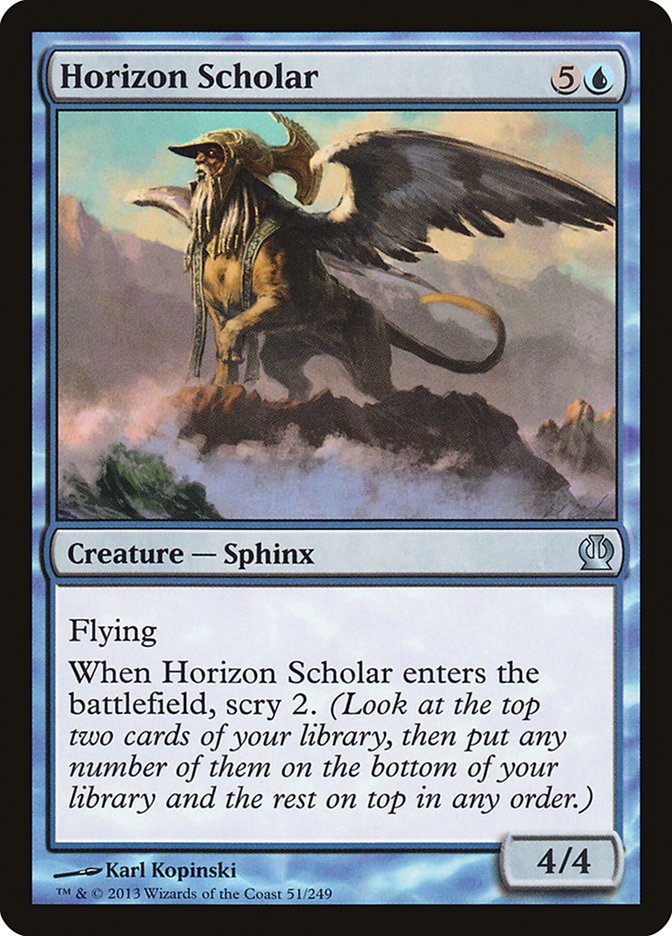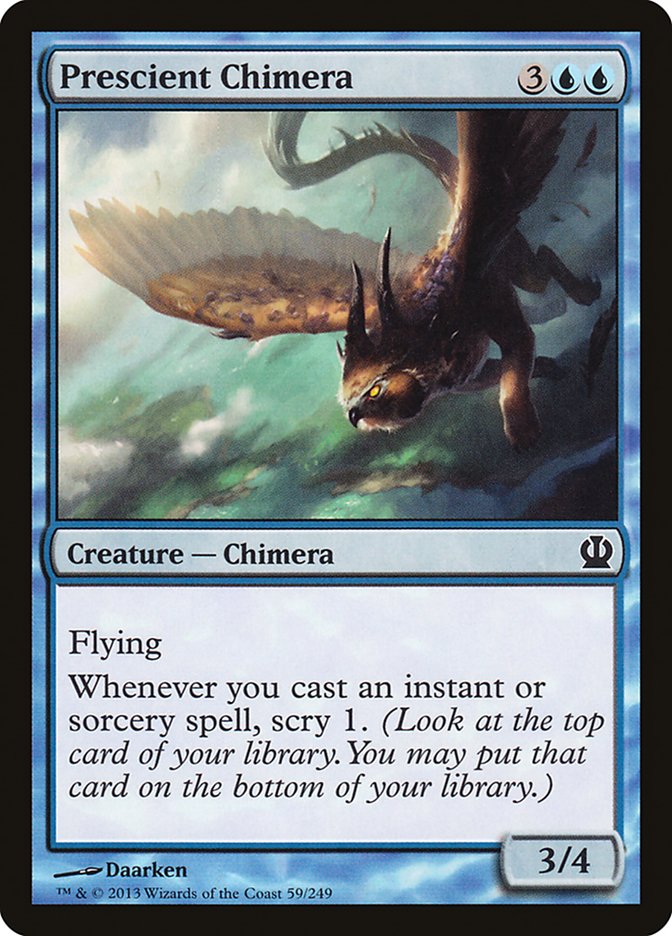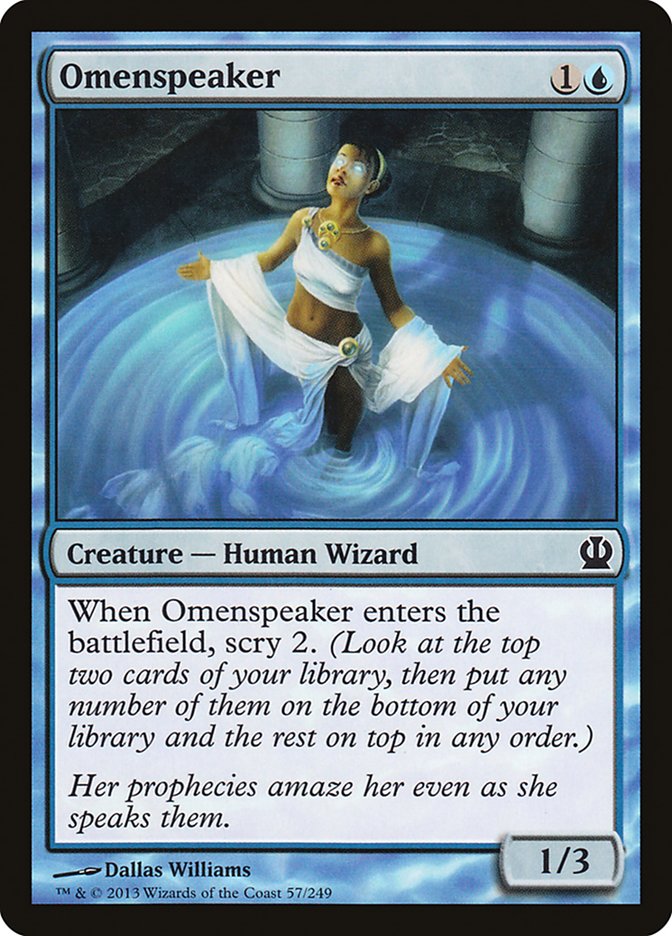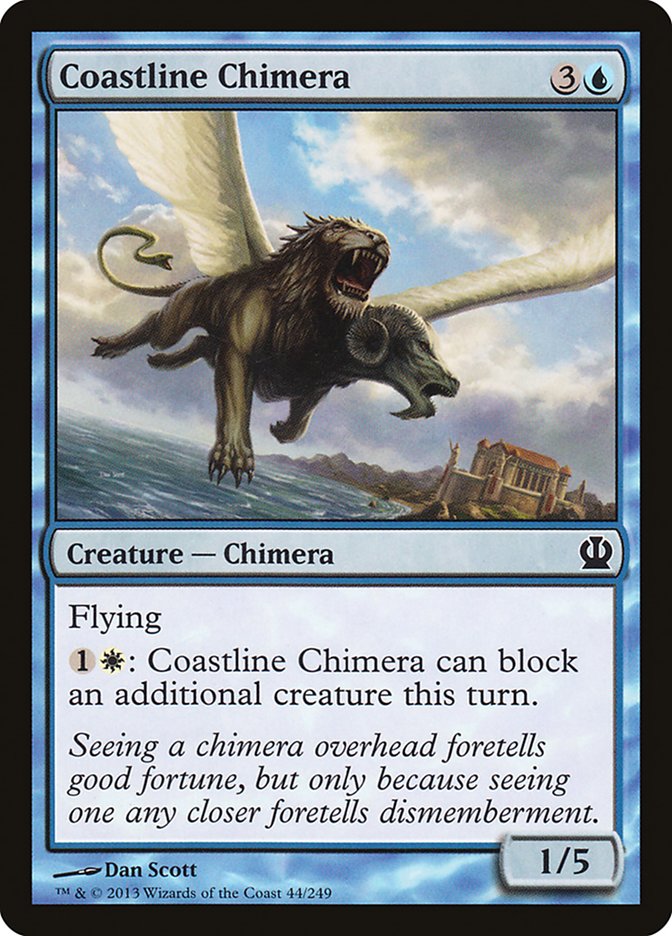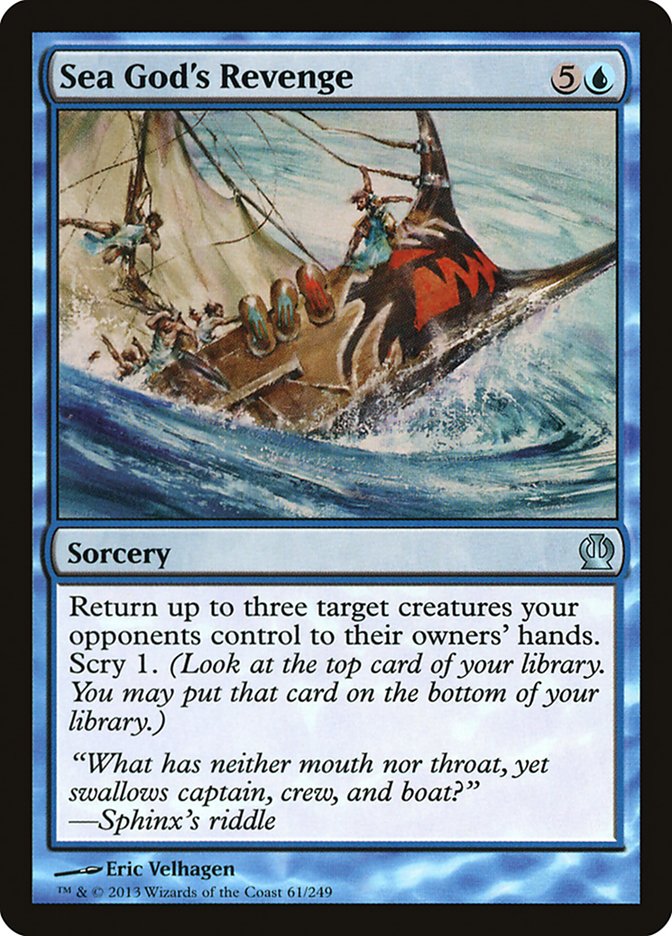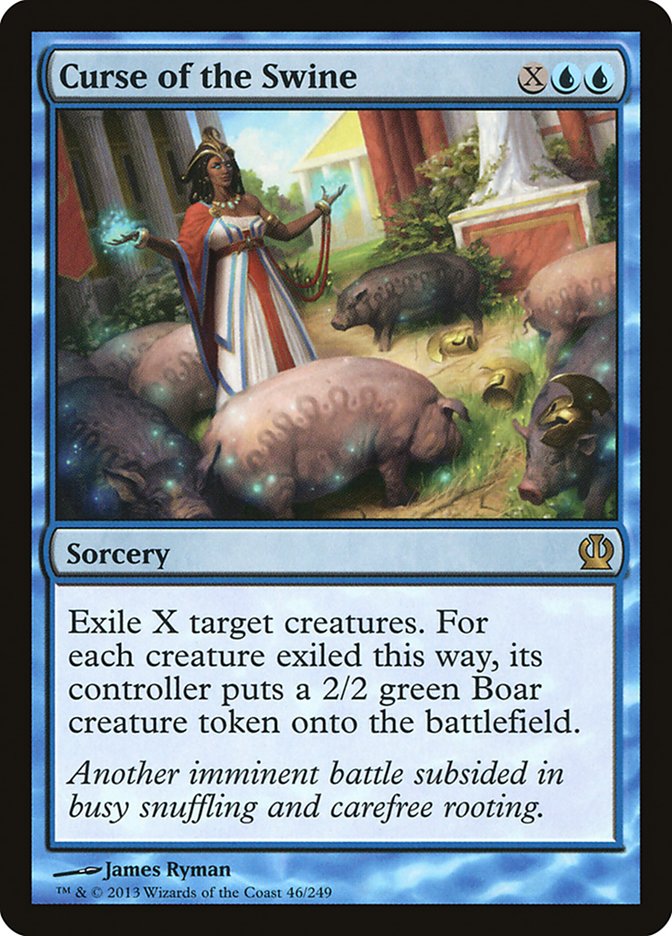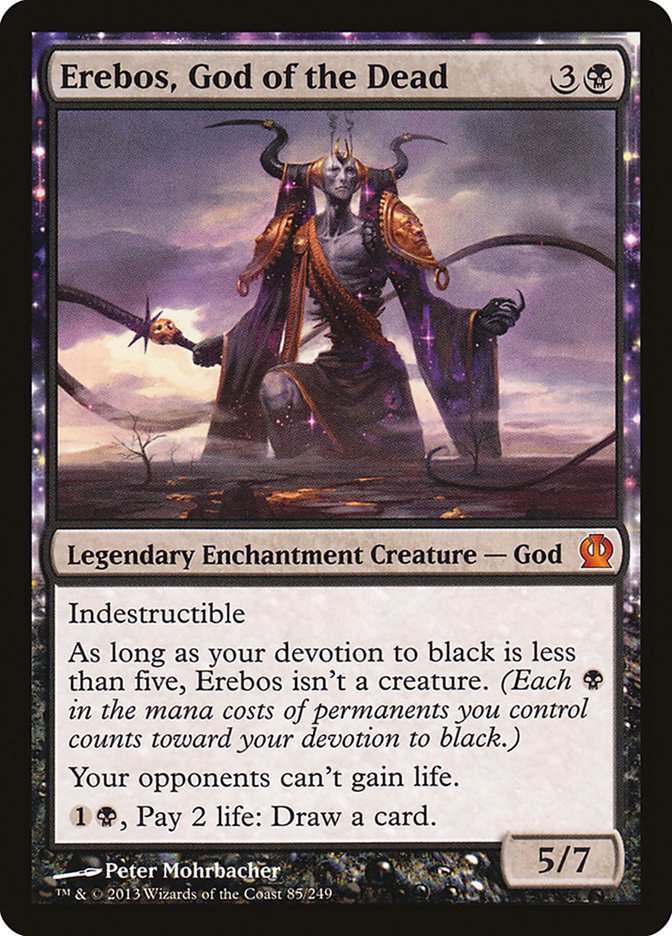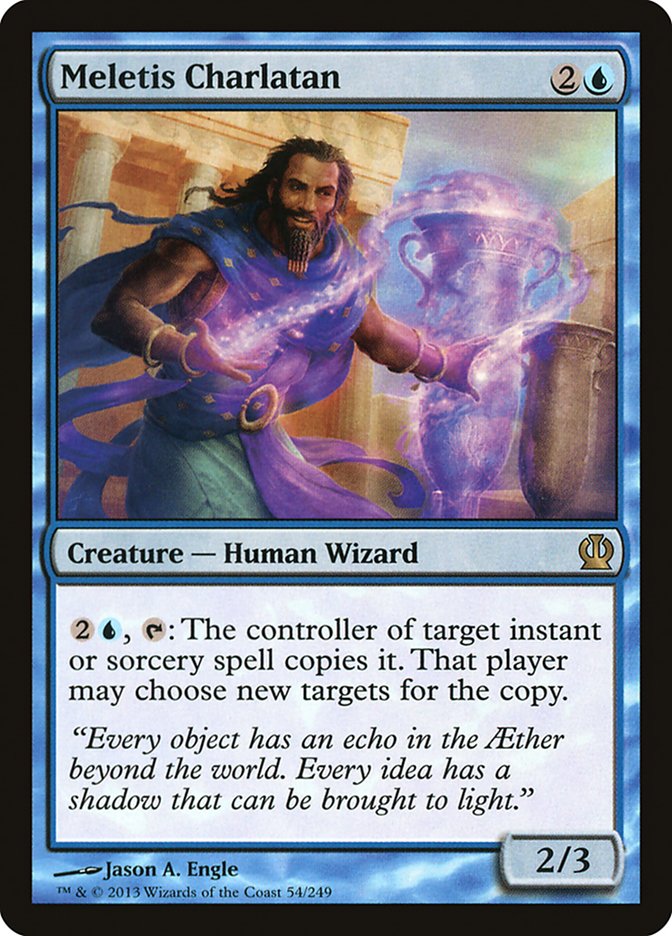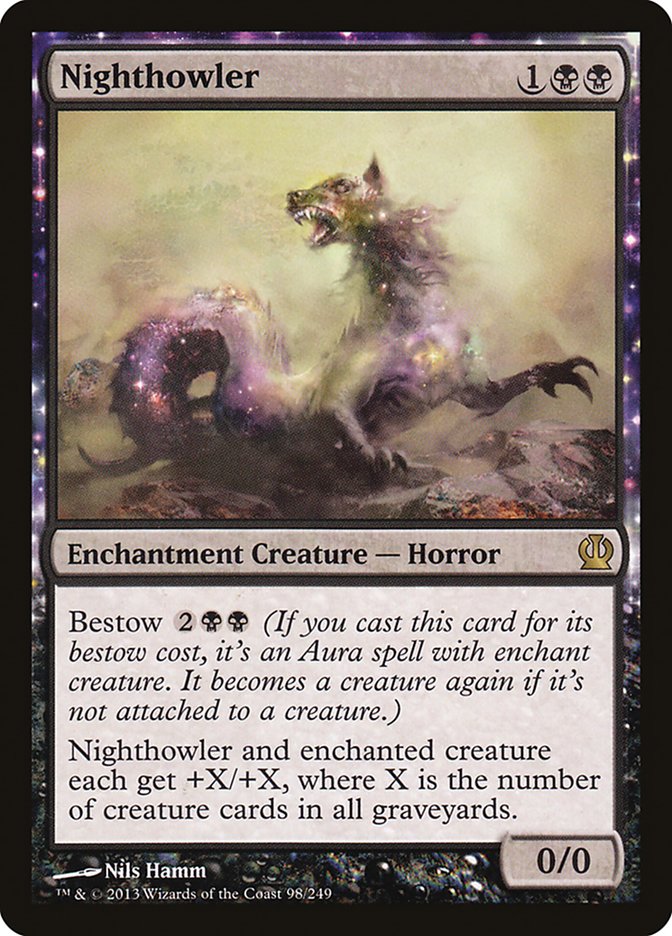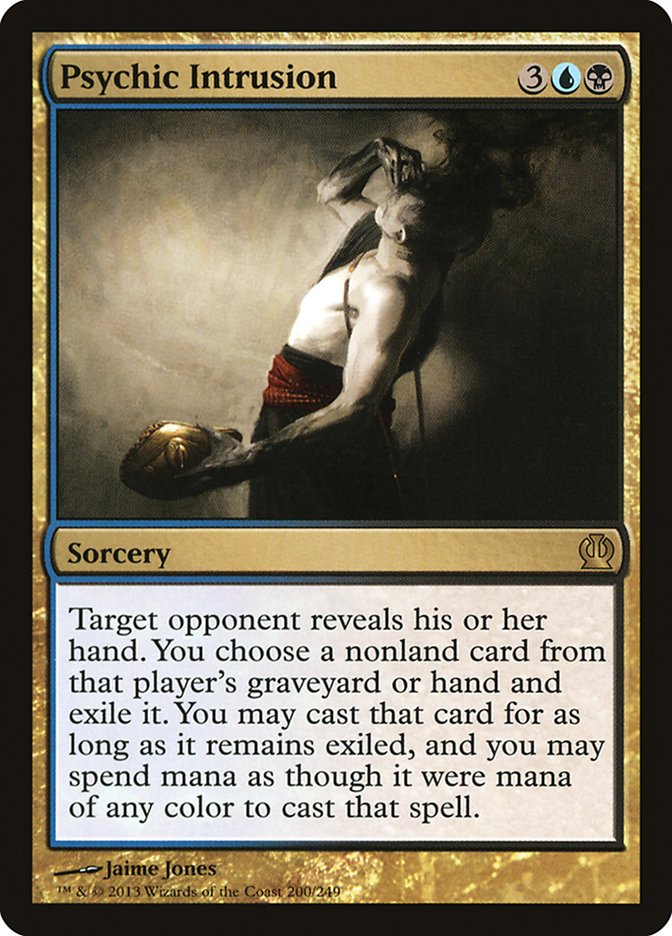It is important when learning to draft a format and when practicing that format that you expose yourself to all available archetypes since you never know what is going to happen. That being said, it is certainly reasonable to have preferences and to use those preferences as a tiebreaker when making close drafting decisions. In Theros Draft, my favorite archetype by a fairly large margin is U/B Control. I wouldn’t go as far as to say that I force it and have certainly done enough drafts that I’ve drafted a fair amount of every archetype, but a very high percentage of the time I end up playing U/B Control.
Here is an overview of what I feel to be the general pick order among blue and black commons and uncommons for drafting U/B Control. I didn’t include rares in the pick order but will discuss them at the end of the article.
Keepsake Gorgon
Keepsake Gorgon is essentially a bomb. It might seem like the monstrosity cost of seven is very high, but simply as a five-mana 2/5 deathtouch creature Keepsake Gorgon can really put the brakes on your opponent’s creatures. Keepsake Gorgon also has an advantage of not worrying too much about combat tricks. Most creatures who are gaining control of the ground still have to worry about things like Savage Surge or Battlewise Valor. With the Gorgon you can more or less block with immunity, knowing that if your opponent spends a combat trick they are still losing both the trick and the creature (exceptions being Coordinated Assault and Lash of the Whip).
Thassa’s Emissary
Thassa’s Emissary is my favorite card in Theros Draft. It might not be the best card, but it’s the most fun. Gaining card advantage is a bit harder in Theros Draft than in some other formats, and Thassa’s Emissary if left unchecked can take over and win the game very quickly. Sometimes Thassa’s Emissary is a great turn 4 play. If your opponent has a slow draw, you are able to use bounce spells and removal spells to keep removing blockers and draw more cards, gaining card advantage and tempo. And in many games because U/B is a deck that can be slow and take a long time to win, you can bestow the Emissary onto a flying creature later in the game and take over that way.
Gray Merchant of Asphodel
It’s probably no surprise to see Gray Merchant of Asphodel as the top common on the list. Gray Merchant is extremely powerful and gets exponentially better in multiples. It has the power to either close out a game or allow you to get back in a game by draining your opponent for a large amount of life. Even when its impact isn’t as enormous as it’s capable of, Gray Merchant still has a reasonable body and can do a decent job as a blocker.
Shipwreck Singer
If you haven’t had a lot of experience with U/B Control, you might be surprised to see Shipwreck Singer this high on my list. One concern when drafting U/B is that there isn’t a lot of high quality two-drops. Shipwreck Singer is the best answer to that concern. It has the ability to win a game nearly on its own. With one reasonably sized creature to partner with the Singer, you can often use the Singer’s two activated abilities in combination to nearly eradicate all of your opponent’s creatures. The ability to reduce incoming damage and singlehandedly wipe out every one-toughness creature your opponent plays also makes Shipwreck Singer is a very powerful card, one that I have no problem taking first pick.
Griptide
Griptide is a terrific tempo card and essentially qualifies as a removal spell in a format with so many creature enchantments and bestow. It’s possible that I’m overrating the card advantage gained by Griptide as opposed to the reduced mana cost of Voyage’s End, but sometimes you can even use a card like Returned Centaur or Thassa’s Bounty to mill the creature once you’ve put it on top of your opponent’s library. Also, Griptide can be used in effect to force your opponent to skip their draw step if you are already ahead in a game and want to use is it effectively as a Time Walk to gain an extra turn and push your edge.
Voyage’s End
As I indicated above, Griptide versus Voyage’s End is a close pick. Voyage’s End’s primary advantage over Griptide is being cheaper. If my deck already has a particularly high curve or I already have a copy or two of Griptide, I would certainly consider moving this above Griptide in my pick order. Another advantage Voyage’s End has over Griptide is that it can also be used to protect your own creatures effectively from opposing removal spells. When deciding between these two spells, use your best judgment, but my personal preference early in the draft is for Griptide.
Erebos’s Emissary
Like the rest of the cycle of Emissarys, Erebos’s Emissary is very powerful. While it’s not as good as Thassa’s Emissary, it is still extremely powerful and a welcomed addition to any deck. One of the best things about Erebos’s Emissary is that it’s extremely difficult for your opponent to play around. Even if you don’t have any spare creatures in your hand to discard in order to pump your Emissary, your opponent doesn’t know that and has to play as if you do. And like Thassa’s Emissary, Erebos’s Emissary bestowed onto a flier can very quickly end the game.
Pharika’s Cure
Cure is another spell that is close in power level to other spells of its type, in this case removal spells. Because Pharika’s Cure can bridge the gap from the early game to the late game and gain a couple life in the process while giving you something to do on those early turns where you might be lacking, I would typically take my first Pharika’s Cure over my first of the other common black removal spells.
Read the Bones
I like Read the Bones more than most people in Theros Limited. There aren’t a lot of cards that help you gain card advantage, and Read the Bones does that very effectively. In addition to pure card advantage, it provides you with card selection thanks to its scry 2. The cost of two life isn’t irrelevant, of course, and Read the Bones is going to prove to be a little better in decks where you’re able to find a few two-drops so that when you’re on the draw you can safely Read the Bones on turn 3 without having to discard to hand size.
Baleful Eidolon
The best of the common two-drops, Baleful Eidolon can help in the early game to prevent an onslaught or bestow onto another small creature in the midgame, giving you the ability to deal with a powerful card like Nessian Asp while defending against a removal spell or even deal with two creatures.
Returned Phalanx
Another two-drop, I rank this one slightly below Baleful Eidolon. It’s still able to stall up the board in the early game and give you something to do before turn 3, but it’s worse than Baleful Eidolon is once you reach the midgame. That being said, I really like Returned Phalanx. I played four copies in a deck last week on Magic Online, and I did not regret it.
Sealock Monster
Cards like Sealock Monster provide what I like to call “effective card advantage.” What I mean by this is that although it doesn’t provide any true card advantage if you have effectively negated two of your opponent’s creatures by playing it you have gained effective card advantage. As a five-mana 5/5, Sealock Monster can hold the ground against even some of the bigger creatures in the format, making it very difficult for your opponent to attack at all. Late in the game Sealock Monster can be a very realistic win condition.
Lash of the Whip
If Lash of the Whip were a little cheaper or a little more powerful, it would easily be at the top of the list. It’s still very good at dealing with a lot of opposing creatures. Some of the biggest pitfalls are monstrous creatures, combat tricks, and heroic creatures that have grown out of control. I still like to have a couple copies of Lash of the Whip in my deck if I can get them at the appropriate time but would not often play more than two.
Sip of Hemlock
Sip of Hemlock is more powerful than Lash of the Whip but also more expensive. It’s a very good card, and I like to be sure I have one in all my decks. It works as a catchall to deal with a massive problem creature or rare that you would otherwise not be able to deal with. If it’s getting late in the draft and I don’t have a Sip of Hemlock yet, I will often take this higher to make sure I end up with one.
Dissolve
One issue with playing control decks in Limited is that the games often go very long. In those games if you’re opponent has a “bomb” in their deck, it’s likely they will end up drawing it. For that reason I’ve always liked to have a counterspell or two in my control decks. Dissolve is one of the better counterspells that’s been printed in quite a while, and I’m always happy to pick one up in Theros Limited.
Disciple of Phenax
Disciple of Phenax is another card that varies quite a bit based on your deck. The higher you expect your devotion to black to be, the better this card is. The difference between being able to look at your opponent’s entire hand and their hand except for one card is very big. Having information about your opponent’s hand is also very useful in a control deck.
Insatiable Harpy
An evasion creature that is a great target for your bestow creatures due to lifelink, Insatiable Harpy is a reasonable addition to any deck. If left unchecked, the ability to gain two life per turn by attacking can prove very useful in extending the game and giving you time to establish board control. The downside of the Harpy is that it doesn’t fare well on defense; if your opponent plays a flying creature, it’s likely to be bigger than or at least equal in size to the Harpy.
Mnemonic Wall
Mnemonic Wall probably more than any other card on this list wildly varies in power level depending on the strength of your deck. For example, if you were fortunate enough to open a card like Hero’s Downfall, I would recommend drafting this card much higher. On the flip side, if you’re low on spells, you might be better off just passing on the Wall altogether. In general, though, I like Mnemonic Wall. It helps you grind out incremental card advantage, and the 0/4 body can certainly help with blocking, even if it’s just to chump a monster for a turn while you wait to recast your Sip of Hemlock.
Nimbus Naiad
While Nimbus Naiad is a bomb in U/G or U/W decks, in U/B it’s just okay. It has a very powerful effect, and its value certainly goes up if you end up snatching an Agent of the Fates or a copy or two of Wavecrash Triton. However, when you’re drafting U/B, usually the important cards are the ones that are going to let you take control of the game, not the cards that are going to let you finish the game. And although Nimbus Naiad will help you win a game after you take control, there are a lot of cards that do that, and therefore I wouldn’t prioritize the Naiad too high.
Horizon Scholar
Horizon Scholar is another expensive finisher that I am not unhappy to have in my deck that I wouldn’t take very high.
Prescient Chimera
Prescient Chimera is another card that you could classify as a win condition. It’s not great but certainly not bad. Like the others, I wouldn’t take it very high but don’t mind ending up with it in my deck.
Omenspeaker
Omenspeaker is a two-drop with the added benefit of scry 2. It is only a 1/3 so you don’t get as big of a body as Return Phalanx, and the loss of deathtouch makes it quite a bit worse than Baleful Eidolon. The scry is nice, but even still it is a pretty weak draw in the middle or late game compared to the other two-drops, especially Baleful Eidolon.
Coastline Chimera
Coastline Chimera has performed surprisingly well for me in U/B Control just as a 1/5 flying blocker. It’s also a great target for bestow creatures, as it is extremely difficult to deal with.
Sea God’s Revenge
A lot of people are surprised with how little I like Sea God’s Revenge in U/B Control. I rarely ever end up with it in my card pool though because it’s such a bomb in other blue decks, and I don’t think it’s very good at all in U/B Control. As I wrote about in my GP Toronto article, I even left two copies in the sideboard of my U/B Sealed deck in that tournament. I’ve had plenty of U/B Draft decks with which I would’ve made the same decision.
Here are the rest of the blue and black commons and uncommons that I consider to be playable in U/B Control. In general I prefer not to have them in my deck but often end up having to play a couple:
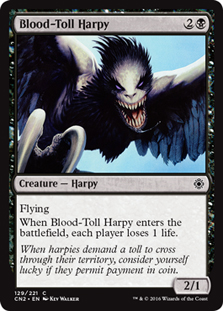
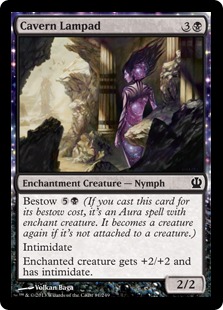
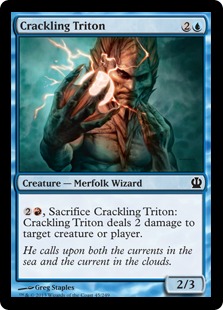
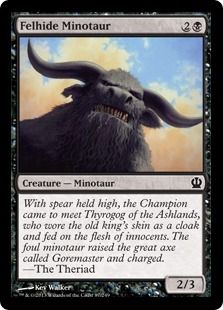
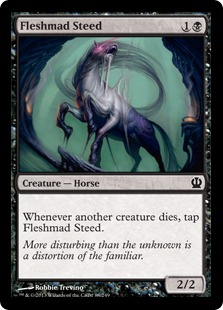
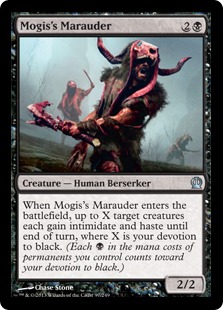
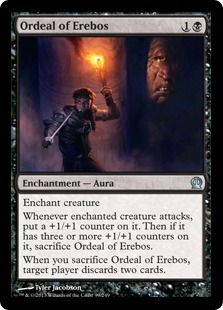
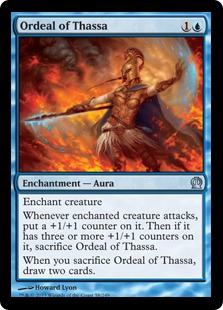
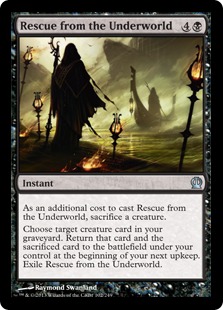
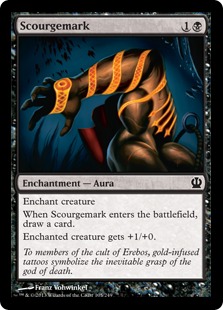
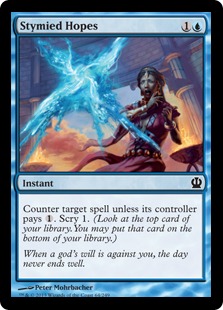
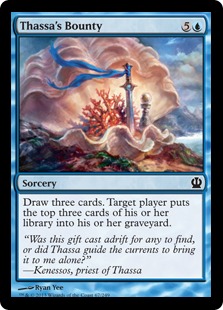
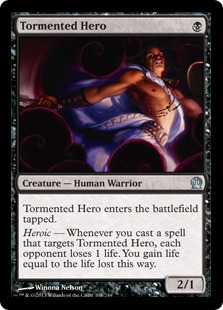
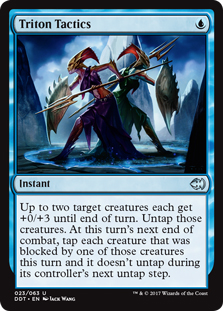
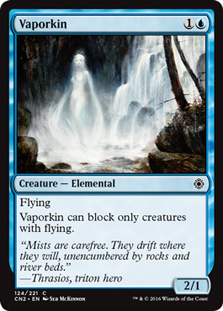
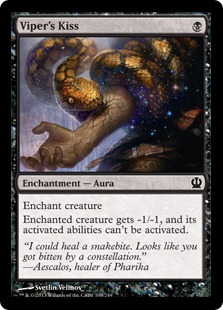
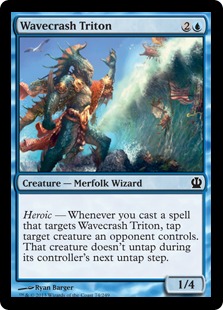
Rares and mythics can be a little harder to rank because they are, well, more rare. You don’t get as much experience with them, and that makes them harder to evaluate.
Here are what I consider to be the bomb rares, cards that I very rarely consider passing for a common or uncommon:
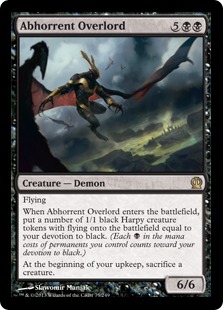
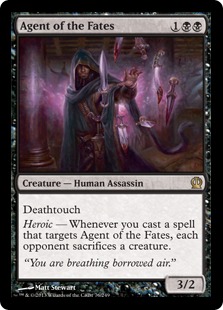
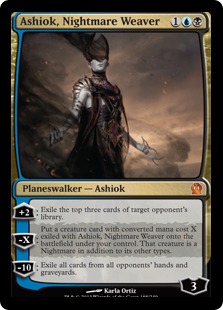
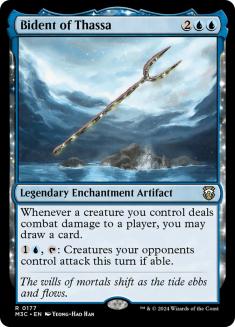
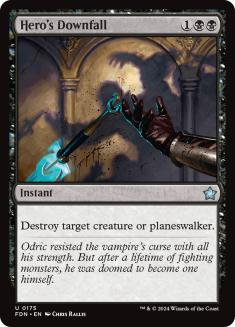
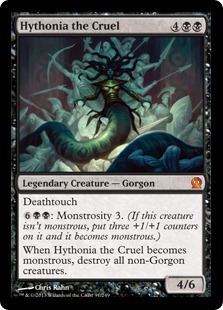
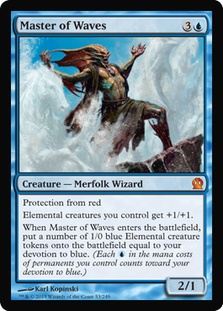
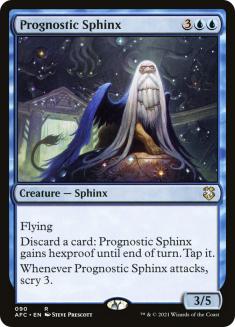
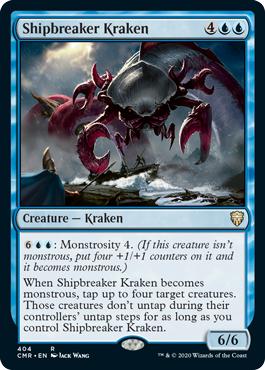
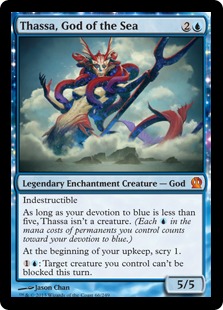
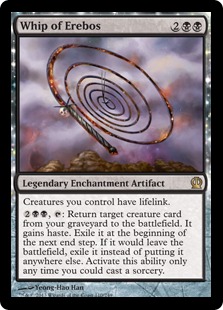
The bomb rares are generally pretty well known and don’t require much of an explanation. Here is a brief discussion of the rest of the blue and black rares:
Curse of the Swine
Curse of the Swine is roughly on the same power level as Baleful Eidolon. Later in the draft if you don’t have any good removal spells, its value will increase. However, in a deck that has a healthy selection of removal already, the value will go down. The drawback of giving your opponent a 2/2 per creature that you remove is very relevant. It makes Curse of the Swine a little weak against decks with a lot of creatures but none that necessarily stand out.
Erebos, God of the Dead
I have been very underwhelmed by Erebos in Theros Limited. I would basically only be happy about taking him in a deck where I think I’ll regularly be able to have him be a creature due to devotion five. The ability to pay two life to draw a card is a good one, but when you consider that by the time you’ve drawn three cards you’ve paid ten mana and six life, you’d have been better off with a Thassa’s Bounty.
Meletis Charlatan
When evaluating this card, it’s most important to first consider the fact that you’re basically strictly better off with him compared to a Felhide Minotaur (unless you have a lot of devotion to black-dependent cards) or Crackling Triton. Obviously that’s nothing to write home about, but the ability on the Charlatan can be a huge bonus. The more spells you have and specifically the more copies of Voyage’s End and Pharika’s Cure you have, the better this guy is. Those two are particularly important because they are the cheapest spells and therefore the easiest to copy.
Nighthowler
Nighthowler is very powerful. Late in the game, it’s often a three mana 10/10. Unfortunately, in your opening hand it often has to sit until creatures are able to trade off or you’re able to cast a couple removal spells. Overall I think the upside of Nighthowler is very high, and I’d likely take him above Erebos’s Emissary.
Psychic Intrusion
This card is great. I used to think it was even better, but over time I realized that it is a bit of a win more. Very often it’s a tough card to find time to cast if you’re losing. But if you manage to gain parity or get slightly ahead, it can be a real backbreaker.
Thoughtseize
Thoughtseize is good. I’d basically always play it if I have it. However, if there was a glaring problem with my deck like a lack of early plays, not enough creatures, or no removal spells, I would likely attempt to fill those holes before selecting Thoughtseize.
When you’re drafting, always remember that you’re drafting a deck; you’re not just drafting an assortment of cards. Pick orders are very helpful to discuss and are useful guides that will hold true a vast majority of the time, but they don’t hold true a hundred percent of the time. No two situations are identical, and it’s important to think about your picks in the context of the specific deck you are drafting. So next time you’re drafting U/B Control in Theros, whether it be on Magic Online or this weekend at Grand Prix Sacramento, I hope this article will serve as a useful guide in helping you arrive at the correct decisions.

